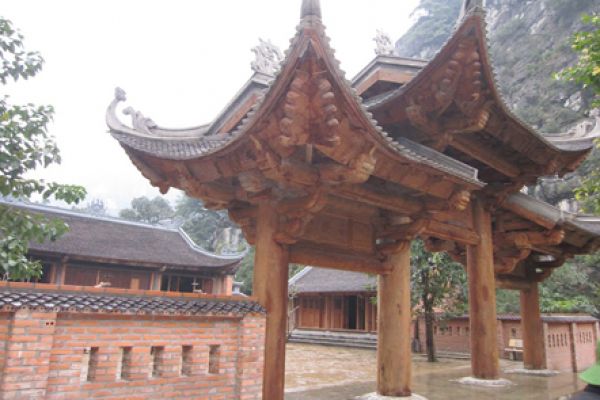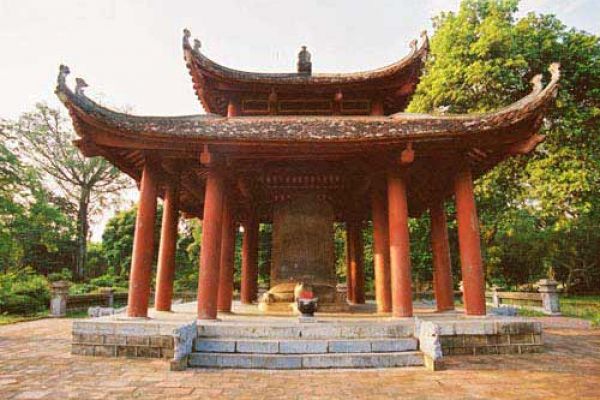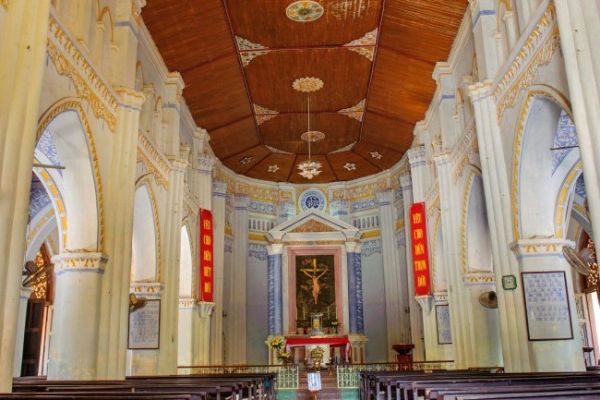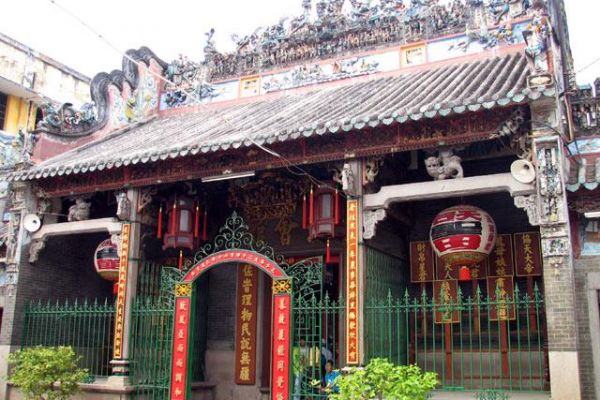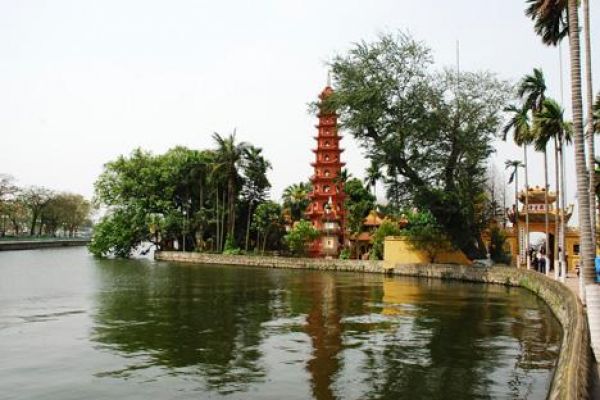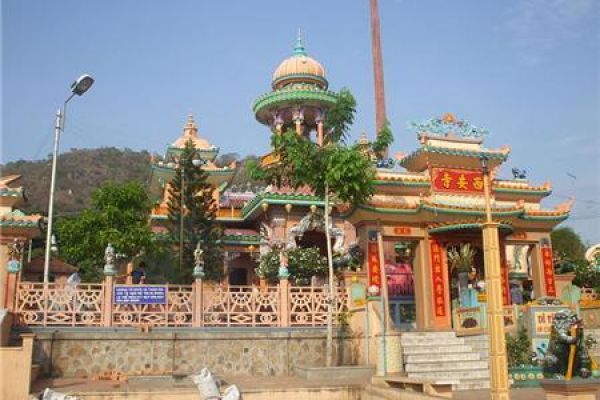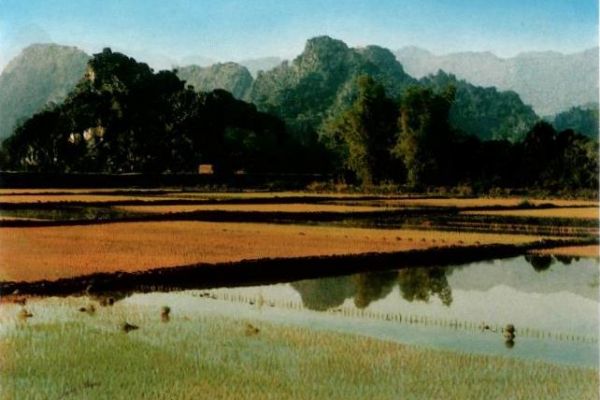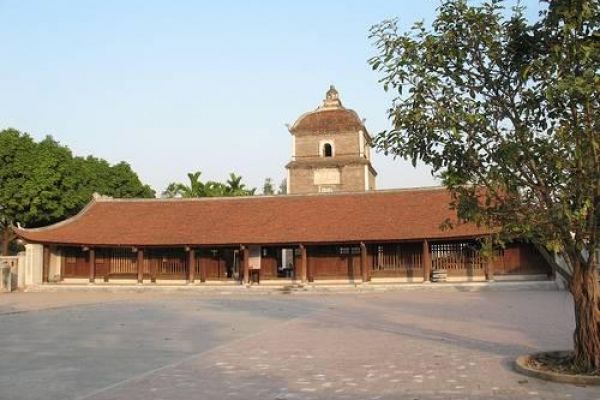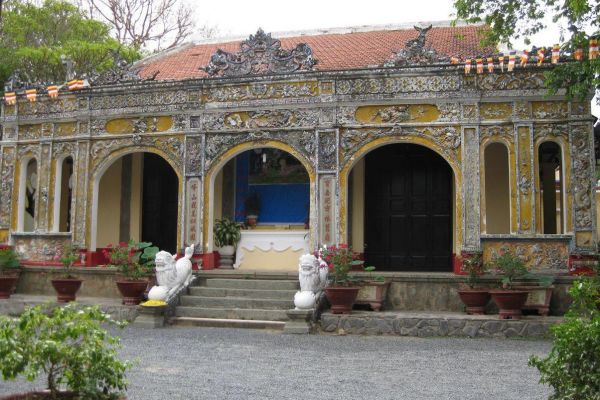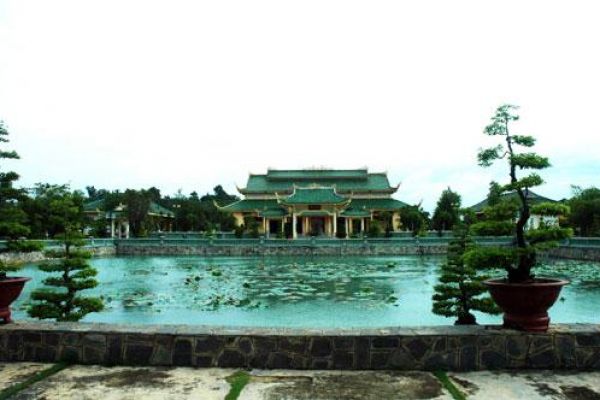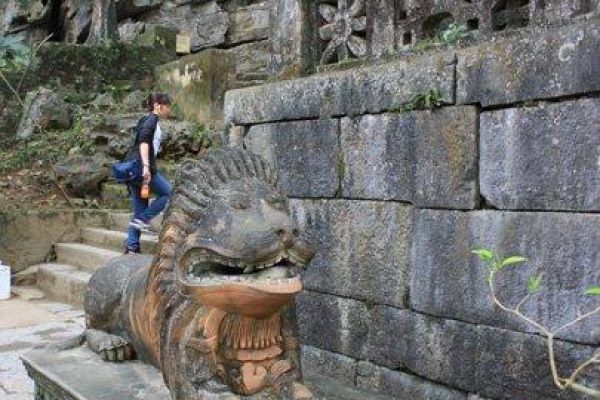
Comtemporary NgocLangTemple
Ngoc Lang temple is situated in an area of about 3,000m2, surrounded by lush fields and gardens, lots of houses. The temple faces the South, opposite Da Rang river, and Da Bia mountain far like a front-shielding.
Ngoc Lang temple is built in accordance to the traditional architecture, including three chambers, tile-roof, roof top decorated with “luong long trieu nguyet” (two dragons at two sides of the moon), the front side was simply decorated with three National language’s words “Dinh Ngoc Lang”, while the inside, above the main doorwith three Chinese words “Ngoc Lang Dinh”. Either side of the two walls is the remains of the old architecture from the late 19th century, 0.4 m thick, built of compounds.
On the walls of the corridor’s two ends still remain two “phu dieu” panes of the door-guarding deity with the majestic look. The altar inside the temple worships the “bai vi” of those leading to the development of the new land and establishment of villages, including Le Van Xuyen, Le Thi Loi and Le Luu. Ngoc Lang temple also worships the White Horse deity, a Vietnamese people’s important belief.
The White-Horse-deity belief at Ngoc Lang temple showed that the Vietnamese had brought religious worship of the White Horse in the journey to explore the South land with the desire of being protected in life by the deity. With surveys, among temples in Phu Yen province, we first found that only at Ngoc Lang temple, has the White-Horse-god worshipping religious been seen, which is a unique feature in the monument.
In addition, at the temple’s facade, there are two small temples; one at the right worships “Hau Tho” god, on its rear-wall written two words “Phoi Thien” (meaning matching with the sky); this is the shrine of the deity ruling the land, it’s Thien Y A Na; one at the left worships Ngu Hanh, including Metal, Wood, Water, Fire, Earth, which are the main factors creating the heavens and the earth in the ancients’ sense.
At Ngoc Lang temple, some of Han-Nom documents, including a decree from Thieu Tri King, 6 ordains of the Kings of Tu Duc, Dong Khanh, Duy Tan, Khai Dinh are also preserved. Contents of the decree and ordains were related to the village-tutelary deity and the White Horse deity.
About the Tutelary of Ngoc Lang village, Thieu Tri King’s decree let known, Le Van Xuyen was ordained by Minh Mang King in 1832. The ordain was then stored in his offspring’s house, Le Van Phong, but burned in a fire, so Phu Yen government reported the incident to the imperial court; in the year of 1844 (4th year of Thieu Tri King) King Thieu Tri issued a decree to confirm this.
Based on the “bai vi” content in the temple and Thieu Tri King’s decree, it can be speculated that Le Van Xuyen living in the early eighteenth century. Based on Tu Duc King’s ordain in 1852, it can be known that before that time, tutelary Le Van Xuyen was deified the title “Bao An Chinh Truc Chi” deity, through the next ordains, the Tutelary is kept or offered more titles, but the Nomination of Khai Dinh King in 1924, Ngoc Lang Tutelary of Minor god level was raised to the Middle deity.
About White Horse deity worshipping religious, ordains showed this important belief was longstanding in Ngoc Lang, White Horse deity was seen as a well-beingone. The ordains by Tu Duc King showed that by 1852, White Horse deity worshipped in Ngoc Lang temple was offered “Thuong Dang” deity god with the title “Duong Oai Ngu Vo Bao Chuong Kien Thuan Hoa Nhu Thuong Dang” deity; through the nominations of the Kings of Tu Duc, Dong Khanh, Duy Tan, Khai Dinh, White Horse deity was honored more titles and assigned to be solemnly worshipped by people in Ngoc Lang village at Ngoc Lang temple so as to be blessed for the nation with peace, prosperity.
Therefore, every year, on February 27th and September 9th (lunar calendar), Ngoc Lang villagers offer divine, folk-called “Xuan ky, Thu te”, which also is a cultural and religious activity to engage community, expressing the moral of “drinking water, remembering source” and creating more love to the homeland and country.
With important content, Ngoc Lang temple is worth being an ancient land’s evidence located beside Nhan mountain, Da river.
Source: Phu Yen Newspaper

